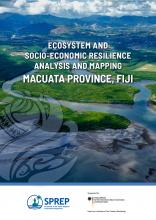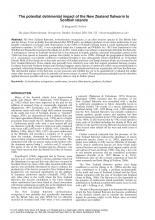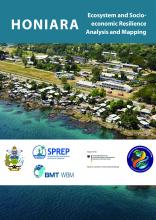The potential detrimental impact of the New Zealand flatworm to Scottish islands


Island and Ocean Ecosystems, BRB
Available Online
The New Zealand ?atworm, Arthurdendyus triangulatus, is an alien invasive species in The British Isles and the Faroes. It was probably ?rst introduced after WWII and is an obligate predator of our native earthworms. It was initially considered a curiosity until observations in the 1990s in Northern Ireland found it could signi?cantly reduce earthworm numbers. In 1992, it was scheduled under the Countryside and Wildlife Act 1981 then transferred to the Wildlife and Natural Environment (Scotland) Act in 2011 which makes it an o?ence to knowingly distribute the ?atworm. A retrospective survey in Scotland showed that it was detected in botanic gardens, nurseries and garden centres in the 1960s but then spread to domestic gardens then ?nally to farms in the 1990s. Although the geographical distribution of A. triangulatus was initially con?ned to mainland Scotland it was subsequently found established on 30 Scottish Islands. Most of the islands are to the north and west of Scotland and have cool damp climates which are favoured by the New Zealand ?atworm. These islands also generally have relatively poor soils that support grassland farming systems. Evidence from both Northern Ireland and Scotland suggests anecic species of earthworm which occur predominantly in grassland, which help drainage and are a source of food for both animals and birds are at particular risk from the ?atworm. The detrimental impact of the ?atworm on soil processes and wildlife has yet to be quantitatively evaluated but unlike many other invasive species there is currently no known means of control. The precautionary principle must be therefore applied wherever possible and every opportunity taken to stop its further spread.




